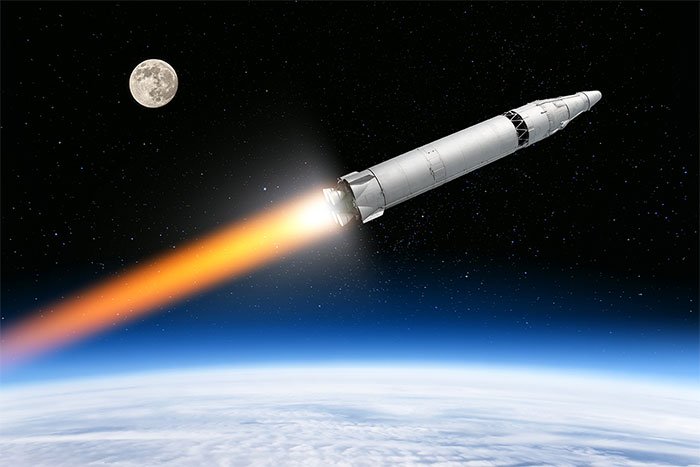New groundbreaking rocket engine system
Researchers have developed a new advanced rocket propulsion system that was once thought impossible. This system is known as a rotating detonable rocket engine that will allow the upper-level missiles for space missions to become lighter, travel farther and burn cleaner.
The results were published this month in Comb Fir and Flame magazine .

The technology developed by UCF will increase rocket performance
Kareem Ahmed, assistant professor at UCF's Department of Mechanical and Aerospace Engineering, who led the research, said: 'For the first time, the study provides experimental evidence for a hydrogen fuel explosion and Oxygen is safe and works in a rotary ' rocket engine '.
The explosions rotate continuously, the March 5 explosions revolve inside the rocket engine and the explosions are sustained by charging hydrogen and oxygen fuel into the system in moderate amounts.
This system improves rocket engine performance to generate more power while using less fuel than traditional rocket power, thereby reducing rocket load and reducing costs and emissions.
March 5 explosions create energy explosions going 4,500 to 5,600 miles per hour, which is more than five times the speed of sound. They are contained in a durable engine body made of copper and brass.
This technology has been studied since the 1960s but failed because of the chemical propellants used or the way they were mixed.
Ahmed's team made it work by carefully balancing the speed of the propellants, hydrogen and oxygen, released into the engine.
The scientists had to adjust the sizes of the jets releasing the propellants to enhance the mixing of the local hydrogen-oxygen mixture. Therefore, when a spinning explosion appears for this fresh mixture, it is maintained. If we have a little mixture of our ingredients, it will tend to fart, or burn slowly instead of exploding.
Ahmed's group must also collect evidence of their findings. They did this by injecting a tracer into the hydrogen fuel stream and quantifying the detonation waves using a high-speed camera.
We need followers to really see the explosion going on inside and track its movement. Developing this method to describe detonation dynamics is another contribution of this article.
William Hargus, head of the Air Force Laboratory's Rotating Missile Engine Program, co-authored the study and began working with Ahmed on the project last summer.
Hargus added: 'As an advanced push spectrometer, I recognize some unique challenges in observing hydrogen detonation structures. After consulting Professor Ahmed, we were able to build a slightly modified experimental apparatus, significantly increasing the signal strength involved. '
These research results have an impact across the international research community. Some projects are currently retesting the hydrogen combustion process in rotary ignition rocket engines for these results. Hargus is proud to be associated with this high quality research.
- Russia successfully built a quantum engine, speed 1,000km / sec
- Scientists have invented a gel that can heal all body and internal wounds
- The mystery of "Amazon dog ghost" was first solved
- NASA tests rocket engine on the Moon
- A SpaceX rocket engine exploded during testing
- NASA has successfully tested the most powerful rocket on the planet
- Why is the rocket engine still burning out of space even without oxygen?
- 66-year-old astronaut's plasma rocket - NASA bet on upcoming fruit picking (Part 1)
- What happens inside the rocket when taking off?
- Rocket hybrid engines are 25 times faster than sound
- SpaceX tested new engines to bring people to Mars
- Principle of operation of car ignition system
- 66-year-old astronaut's plasma rocket - NASA bet on upcoming fruit picking (Part 2)
- Propulsion engine uses air instead of fuel
- Jeff Bezos is making 'the most important rocket engine of the century'
 The US company is about to build a supersonic passenger plane of 6,000km / h
The US company is about to build a supersonic passenger plane of 6,000km / h Japan develops avatar robot as in fiction film
Japan develops avatar robot as in fiction film Australia tested the world's first mango picking robot
Australia tested the world's first mango picking robot America develops technology to separate water from animal waste
America develops technology to separate water from animal waste